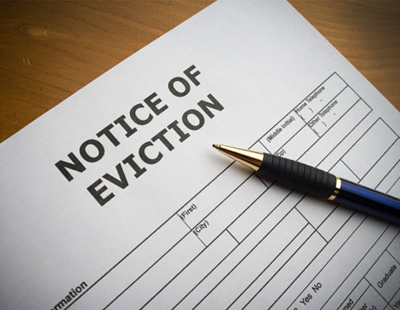It’s easy to forget in the Coronavirus frenzy but from tomorrow, Friday March 20, all tenancies are to become subject to the provisions of the Fitness for Human Habitation Act.
The Act, which applies to England only, came into effect last year but only for new tenancies; from tomorrow it will apply to all tenancies.
Introduced to ensure agents and landlords maintain proper standards in rental properties, there are now 29 separate categories that all landlords must ensure they comply with, or face penalties that range from compensation and rent repayment through to unlimited fines.
Tenants can take direct legal action against an agent or landlord, rather than go through Environmental Health, and so the risks for those who are unprepared are high.
Advice to agents has been given by Simon Gerrard, past-president of the NAEA Propertymark and himself an agent at his north London company Martyn Gerrard.
We’re grateful to Simon for sharing his expertise. Here it is below…
1. Tips for agents:
“Checklists and inventory are simple, but very effective, ways of ensuring compliance with the Homes Act. Before making a property available to rent, landlords would be wise to walk through each room with a checklist in hand, thoroughly reviewing and making a note of any potential breaches of the Act.
“If in doubt, landlords should always ask for help, and there are plenty of experts out there to support them. Consult either a professional body like the National Landlords Association (if you are a member) or a local property expert – at Martyn Gerrard, we’re always happy to assist with any query and have a team of knowledgeable agents that can talk through the specifics of the Act.
“Following a checklist, an inventory is a must. Record the condition of the property in line with each of the 29 categories. Ask yourself: “is damp present?”. Yes or no? You will be left with a clear-cut record of the property’s initial state.
“Then, mid-term inventories are crucial. After a tenant moves in, landlords often forget to schedule and conduct mid-term inventories, which leaves them vulnerable to breaching the Act in the long-run. This inventory allows you to compare the property’s condition throughout the tenancy and clearly map any deterioration. This should be repeated every six months.”
2. Hazards to watch for:
“In my experience, damp is the main category that trips landlords up as there’s a lot of ambiguity around whether condensation is damp. In short, landlords were normally responsible if damp arises, however tenants have historically been responsible for damage caused by condensation. Determining who is responsible is no longer as simple as it used to be. For example, a common issue is bathrooms: if a landlord fails to provide adequate ventilation (like an extractor vent or an open window) and condensation forms as a result of the tenant using the shower, the landlord is still responsible for a breach. The root cause is the landlord’s failure to install ventilation!
“Another issue is water and testing for Legionnaires – landlords are responsible for conducting assessments but it’s difficult to prove whether they’re adequately qualified to do so. Further ambiguity with Legionnaires legislation often confuses landlords but it is their responsibility!
“My advice to landlords who may be unclear as a result of the Act’s ambiguity would be to consult a local property expert – it’s better to be safe than sorry.”
Penalties to avoid:
“The Homes Act has really been introduced to supplement the Landlord and Tenant Act 1985, which has been around for decades! To fill in its loopholes, it has introduced 29 new categories that landlords must monitor and ensure compliance with. It’s an extensive list - even the most well-versed property expert would be forgiven for not being able to recite them all!
“Now tenants can take direct action against an agent or landlord, rather than going through Environmental Health like under the old Act. It’s provided an immediate access route to the courts.
“The penalties of non-compliance remain much the same, including enforcement notices; compensation to the tenant; rent-repayment; and unlimited fines. Naturally every outcome is unique to the individual case but the Act has increased the risk of non-compliance with its extensive roster of compulsory categories. With further prosecution on the cards, and potentially crippling fines, landlords must be thorough and dedicated in their approach to the Homes Act!”













%20-%20IMAGE%20Client%20Accounting%20%E2%80%93%20what%20are%20your%20options.jpg)
.png)








Join the conversation
Be the first to comment (please use the comment box below)
Please login to comment